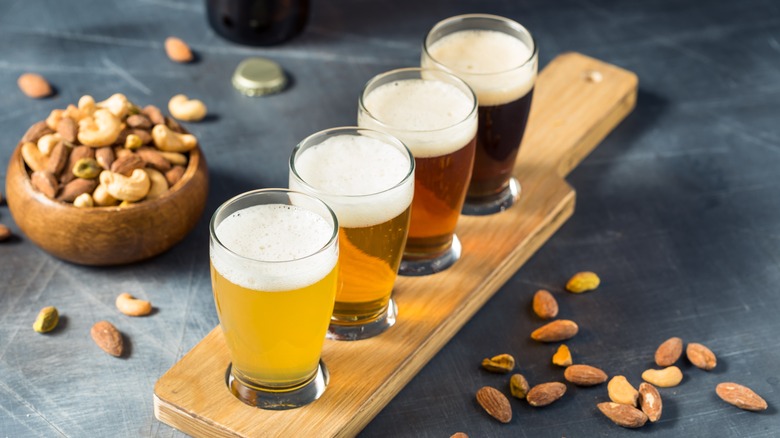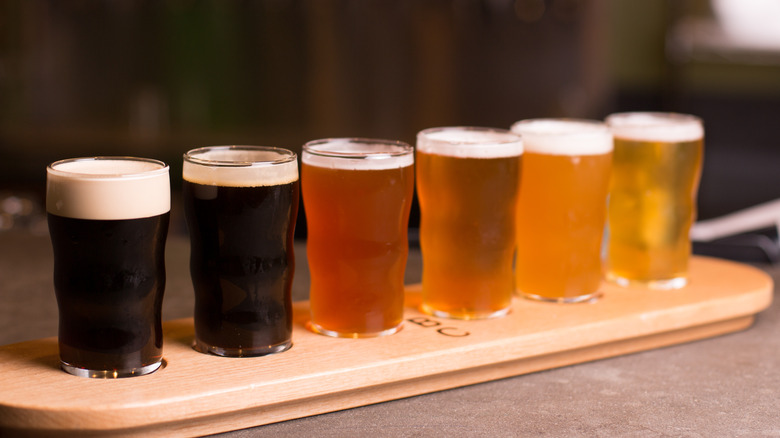How Many Ounces Are In A Standard Pour Versus A Beer Flight?
A standard pour is a way for restaurants and bars to monitor the quantities of booze they're serving, and for consumers to monitor their alcohol intake. In the U.S., a standard pour equates to any quantity of beverage that contains 14 grams of pure alcohol.
There's no standardized strength for alcoholic drinks, so assumptions have to be made. A standard pour of a 40% ABV spirit works out to 1.5 ounces, while a regular beer is assumed to be 5% ABV, meaning a standard pour would be 12 ounces. A beer flight is a selection of beers that allows drinkers to sample different styles. Equating a flight to a standard pour is tricky because the number of beers in a flight — and the quantity in each glass — vary from brewery to brewery. It's also uncommon for the average ABV of craft beer to be 5%, given that craft beer tends to be stronger than the mass-produced equivalent.
For example, a flight of four 3-ounce lagers at 5% is a standard pour, whereas four 4-ounce IPAs at 8% is more than two standard pours, meaning you're consuming twice as much alcohol. However, some labels can help you assess how strong a beer might be. "Session" beers are typically lower than 5% ABV, so a flight will likely equate to one standard pour or lower. Double, triple, or imperial beers can range from 7% to 14% ABV, so a flight of these styles will almost certainly be more than one standard pour.
Why do breweries offer beer flights?
As the U.S. craft beer revolution spread across the country in the early 2000s, the number of available beer types exploded. Independent breweries' desire to stand out — and a freedom from the shackles of shareholders — led to rife experimentation, ranging from the resurrection of outdated beers to unique twists on familiar styles.
Many of these craft breweries opened their doors to curious customers in the form of tours or taprooms, offering them the opportunity to sample deliciously fresh and original beers. Unsurprisingly, visiting beer fans wanted to try multiple styles, and would have been limited if they were forced to buy whole pints. Beer flights were the obvious solution.
First, they allow customers to try multiple beers, usually containing four to six samples per flight. Second, smaller serving sizes — normally ranging between two and six ounces — are beneficial because if a customer doesn't like a beer they're sampling, they haven't wasted money on a full-sized serving. Not everyone loves heavy imperial stouts or hazy IPAs, after all. Lastly, craft beers tend to lean on the strong side in terms of alcoholic strength — another reason it's so hard to equate flights to a standard pour. Offering high-strength beers in pints can't really be considered responsible service of alcohol, but flight-sized servings allow customers to appreciate a strong beer as they would a wine or liqueur while retaining some semblance of sobriety.


